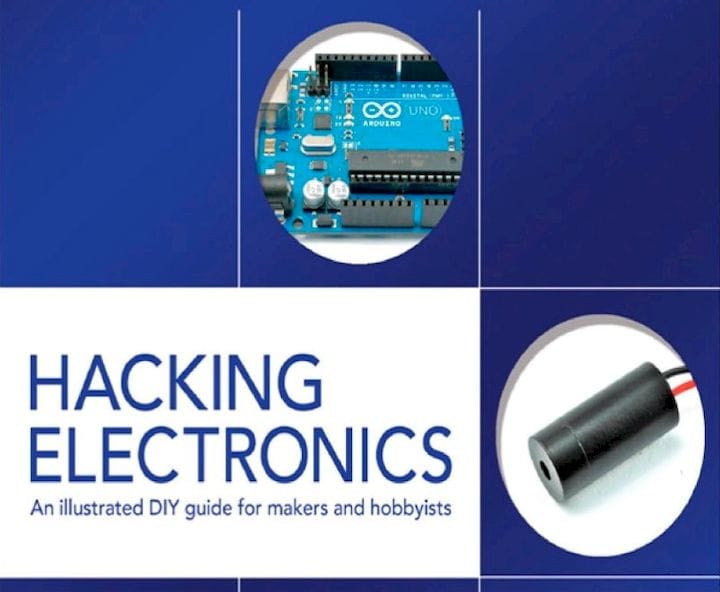![Hacking Electronics [Source: Amazon]](https://fabbaloo.com/wp-content/uploads/2020/05/image-asset_img_5eb094c161445.jpg)
This week’s selection is “Hacking Electronics” by Simon Monk.
You probably noticed that this week’s book selection is actually not a 3D printing book. It’s not about CAD design, post-processing or other seemingly related activity. It is about electronics, however.
Electronics are important to many 3D printer operators, as the purpose of their use of 3D printers is to produce parts for machines. Machines that use electronics.
Many 3D printing projects employ electronics to enable movement, activate sensors, power displays or read switches. These are usually the more interesting 3D printing projects, as they do something more than simply “look good”.
But if you intend on pursuing one of these projects but don’t know much about electronics, where do you start? A good place might be this book, as it takes you through all the basic knowledge you’ll need to know.
How basic does it go? Well, they have a short section on how to strip a wire, and another on how to join two wires together in several different ways. I learned how to do those things a long time ago, but perhaps you have not. You’ll learn the basics of soldering wires, for example.
Another chapter explains the components and theory of electronics. Monk explains what resistors, capacitors and other components actually do, and how they can be used in a system together. And there’s an explanation of electric theory, including current, resistance, voltage and more.
With the basics set, Monk then proceeds to explain how to use common components together to achieve basic low-level functions. For example, he shows how a circuit can make a resistor hot, or how to choose from among different types of transistors and switches. Importantly, he explains how to use MOSFETs to deliver power to motors.
Using LEDs in 3D Print Projects
There’s a very long chapter relating everything you will need to know about operating LEDs. LEDs are a very common feature in any electronics project, as they provide instant visual feedback of machine status. Sometimes they are the purpose of the project, too.
Another chapter explores batteries for electrical storage. There are several different types used for different purposes, and you’ll learn how to select and charge them safely.
Most projects require some logic to be executed to ensure the machine does what it’s intended to do. Many projects use the standard Arduino processor board to do so, and Monk includes a chapter all about Arduino hacking. You’ll learn how to make them blink LEDs, trigger relays, measure voltage, turn motors and much more.
Configuring Sensors
Sensors are also a big part of many projects, and Monk’s book has multiple chapters on this aspect. He even has a section on how to sense magnetic fields, along with many other dimensions.
There’s a small chapter on use of audio in such systems, including all you’ll need to know to hook things up successfully.
Finally, there’s a large section on safety, tools and problem diagnosis, which will inevitably be required on most projects.
After looking at the content of this book, it seems to me that it provides all the building blocks one might need to compose all kinds of very interesting projects. Of course, this is just the electronics; you’ll also need to 3D print cases, holders, mounts and other structures to complete the project.
Via Amazon











This week’s selection is “3D Printing Projects” by Dorling Kindersley, a.k.a. “DK”.